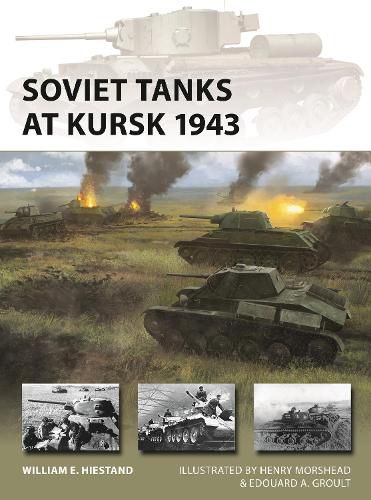Readings Newsletter
Become a Readings Member to make your shopping experience even easier.
Sign in or sign up for free!
You’re not far away from qualifying for FREE standard shipping within Australia
You’ve qualified for FREE standard shipping within Australia
The cart is loading…






Illustrated throughout, this book explains the composition and qualities of the Soviet tank force that fought Germany's mighty Panzers at the biggest tank battle in history.
In the summer of 1943, Hitler's army had rebuilt its Panzer forces after defeat at Stalingrad and retreat from the Caucasus. New types, including the Panther, Tiger, and Elefant, at last added technical superiority to the traditional tactical edge enjoyed by the Panzer divisions. The plan was to begin offensive operations by striking from the north and south to cut off Soviet forces in the Kursk salient.
In this book, Soviet military specialist William E. Hiestand explores the armor that met this Panzer force, in the biggest tank battle of World War II. The Soviets had benefited from their prodigious production capabilities but the tanks at Kursk varied widely. Still short of tanks, the Soviets also still operated weak T-60 and T-70 light tanks, along with the increasingly obsolete KV-1 heavy tank. Significant numbers of Lend-Lease tanks also fought, including M3 Lees, Valentines, Stuarts, Churchills, and the first Shermans to join the Red Army. The Soviets also benefited from the firepower of the first generation of Soviet self-propelled guns - the SU-76, SU-122, and SU-152.
With meticulously researched tank illustrations and rare archive photos, this is an expert account of the Soviet tank forces in the climactic clash on the Eastern Front.
$9.00 standard shipping within Australia
FREE standard shipping within Australia for orders over $100.00
Express & International shipping calculated at checkout
Illustrated throughout, this book explains the composition and qualities of the Soviet tank force that fought Germany's mighty Panzers at the biggest tank battle in history.
In the summer of 1943, Hitler's army had rebuilt its Panzer forces after defeat at Stalingrad and retreat from the Caucasus. New types, including the Panther, Tiger, and Elefant, at last added technical superiority to the traditional tactical edge enjoyed by the Panzer divisions. The plan was to begin offensive operations by striking from the north and south to cut off Soviet forces in the Kursk salient.
In this book, Soviet military specialist William E. Hiestand explores the armor that met this Panzer force, in the biggest tank battle of World War II. The Soviets had benefited from their prodigious production capabilities but the tanks at Kursk varied widely. Still short of tanks, the Soviets also still operated weak T-60 and T-70 light tanks, along with the increasingly obsolete KV-1 heavy tank. Significant numbers of Lend-Lease tanks also fought, including M3 Lees, Valentines, Stuarts, Churchills, and the first Shermans to join the Red Army. The Soviets also benefited from the firepower of the first generation of Soviet self-propelled guns - the SU-76, SU-122, and SU-152.
With meticulously researched tank illustrations and rare archive photos, this is an expert account of the Soviet tank forces in the climactic clash on the Eastern Front.